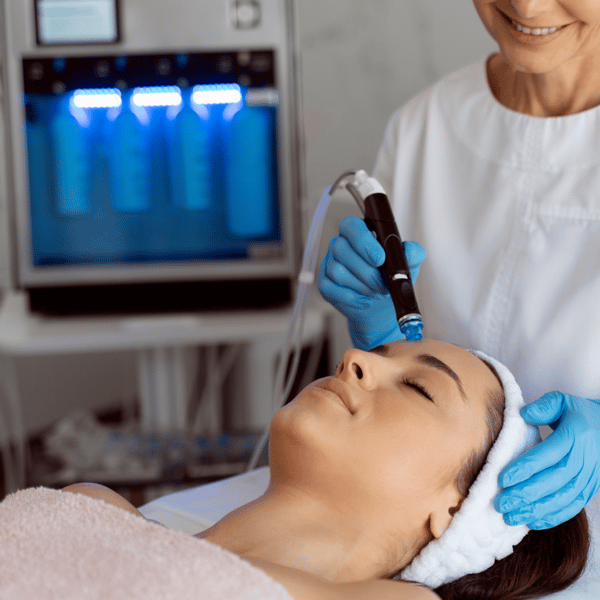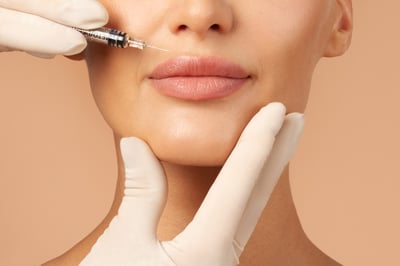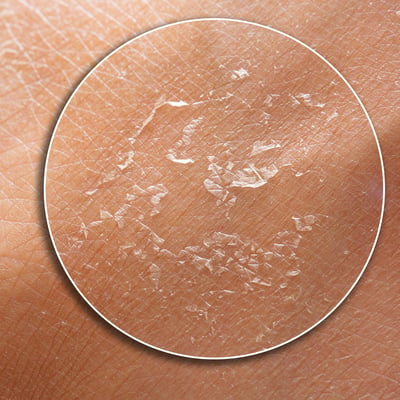
Ready to splurge on some self-care? HydraFacials have become the ultimate indulgence at high-end spas and dermatology practices, with over 2 million treatments performed every year. Promising to cleanse, extract, and hydrate your skin in one luxurious session, it’s no wonder they’re dubbed a “medical-grade hydradermabrasion” experience that can give you “the best skin of your life.” At the same time, with a price tag of $150 to $300 per session, you might be wondering: Are HydraFacials really worth it?
As with most beauty treatments, the answer depends. Maybe you’re prepping for a big event or looking to calm an unexpected breakout—HydraFacials could be the game-changer you need. On the other hand, there are times when a chat with your dermatologist about alternative or complementary options might be a better move.
So, is it worth the hype? Let’s dive into the details and find out.
HydraFacial 411
HydraFacials are designed to be a one-stop shop for glowing skin. The treatment uses a patented, three-step system for cleansing, exfoliating, and infusing the skin with a cocktail of hydrating serums. Think of it as a facial-meets-peel-meets-moisturizer, all in one soothing session.
HydraFacial is typically performed in a clinical or spa environment, and it is often recommended for a variety of skin concerns, including fine lines, wrinkles, acne, hyperpigmentation, and overall skin texture.
Unlike traditional facials, there’s no downtime—just dewy, refreshed skin. It’s also customizable, meaning your skin health provider can tailor the serums and intensity based on your unique skin concerns. Dealing with dryness? They’ll amp up the hydration. Battling breakouts? There’s a solution for that too.
But here’s the catch: HydraFacials aren’t a cure-all. While they can leave you looking radiant and polished for a few weeks, they’re more of a “maintenance” treatment than a permanent fix. That means they’re perfect for special occasions or as part of a regular skincare routine but might not address deeper skin issues like severe acne or hyperpigmentation.
The treatment is often marketed as a “medical-grade” facial, though the term “medical grade” can be a bit vague and is not universally defined in the skincare industry. While HydraFacial technology is FDA-approved and the treatment is offered in medical spas and dermatology offices, the term “medical-grade” requires context. The procedure uses sophisticated equipment and pharmaceutical-grade serums, but it’s important to distinguish it from more intensive medical treatments like laser therapy or deep chemical peels.
Hydrafacial benefits: what do they actually do?
HydraFacial has its share of fans, and many report seeing immediate results. The treatment is known for:
- Deep hydration: One of the most touted benefits of HydraFacial is its ability to hydrate the skin. The treatment infuses serums into the skin that are packed with antioxidants, peptides, and hyaluronic acid to help plump and hydrate the skin.
- Radiance boost: Because it exfoliates the skin and removes dead cells, many patients notice an immediate improvement in their skin’s brightness and texture.
- Improved skin tone and texture: For those with issues like dull skin, hyperpigmentation, or uneven texture, HydraFacial can provide a temporary improvement in the overall look and feel of the skin.
- Acne treatment: For individuals with acne-prone skin, the treatment’s extraction phase can help clear out clogged pores, leading to a smoother complexion over time.
- No downtime: HydraFacials are generally considered safe for all skin types and don’t require any significant recovery time. This makes it an attractive option for people with busy schedules or those preparing for a special event.
In addition to the touted benefits of HydraFacials, it’s important to understand what the treatment can and cannot do:
HydraFacials can:
- Provide temporary improvement in skin hydration and brightness
- Offer gentle exfoliation without irritation
- Help with mild congestion and surface-level skin concerns
- Serve as excellent preparation for special events
HydraFacials cannot:
- Create permanent changes in skin structure
- Replace medical treatments for serious skin conditions
- Provide long-lasting results without regular maintenance
- Match the results of more intensive dermatological procedures
So, what’s the verdict? It really depends on what you’re looking for. If you’re all about instant gratification and that post-facial glow, HydraFacials deliver big time.
Given all this information, what do patients in the real world think of this treatment that is enjoying a viral moment on social media?
Reddit reviews and real-world results
It’s not unusual to find a mix of patient testimonials when it comes to HydraFacial. Some individuals swear by the treatment, calling it a “game changer,” while others feel the results aren’t dramatic enough to justify the price. In fact, a single thread on Reddit has one user saying they get a Hydrafacial every couple of months and will never go back to traditional facials, while the next says they are over-hyped and not worth the money, since long lasting results require ongoing treatment.
A patient at a popular skincare and dermatology establishment found the results remarkable.
“To my surprise, I noticed a difference in my skin after my first visit. The dark spots were much lighter and my whole face looked moist and glowing. I am so happy because I am getting married next month and my face looks totally different.”
For a feature in SELF magazine, Jenna Ryu booked a HydraFacial for the first time in the name of science to see if it would work on her sensitive skin. Ryu left the spa sold on the procedure, even if it is an expensive self-care splurge:
“For one, the large, dark pores around my nose and cheeks seemingly disappeared. And that giant angry eyebrow zit I mentioned? It shrunk two days later without leaving a scar, thanks to the painless extraction process. Overall, the HydraFacial left my face feeling moisturized, smooth, and bouncy—not just immediately after, but even a week later! And bonus points for being one of the only professional treatments I’ve tried that didn’t irritate or exacerbate my eczema.”
One thing the positive and negative reviews can agree on is that Hydrafacial results are temporary. Though they may revitalize your skin for a few weeks, repeat treatments are required for long-term maintenance.
Cha-ching: Weighing the cost of a Hydrafacial
With prices ranging from $150 to $300 per session, HydraFacial represents a significant investment in skincare. For many, the key question isn’t just about the price tag—it’s about value. Though it may not provide lasting changes to skin conditions like acne or deep wrinkles, it can be a good short-term fix for glowing, hydrated skin—particularly when you need a boost before a special event or photoshoot. In fact, many clients who do not want to splurge on a HydraFacial every month save up and book a session when they want to look their best for a wedding, graduation, or other important day.
The bottom line: Are Hydrafacials worth it?
So, though the answer to the fab or fad question still depends on the patient’s goals and budget, HydraFacial can live up to the hype by delivering noticeable short-term benefits, especially for those with dry, dull, or congested skin—without the downtime associated with other treatments. While it’s not a cure-all for chronic skin conditions, it’s an effective and non-invasive option to consider if you’re looking for a quick skin refresh.
The key takeaway: HydraFacial is great for instant gratification, but it’s not a substitute for long-term skincare solutions. Whether or not it’s worth the price largely depends on your personal skincare goals and what you’re looking to achieve.
And, for lasting changes to your skin’s appearance, you’ll need to combine HydraFacial with other long-term skincare treatments or habits.
If you’re looking for more information on HydraFacial or related skin care treatments, reach out to the experts at your local Forefront practice today.





